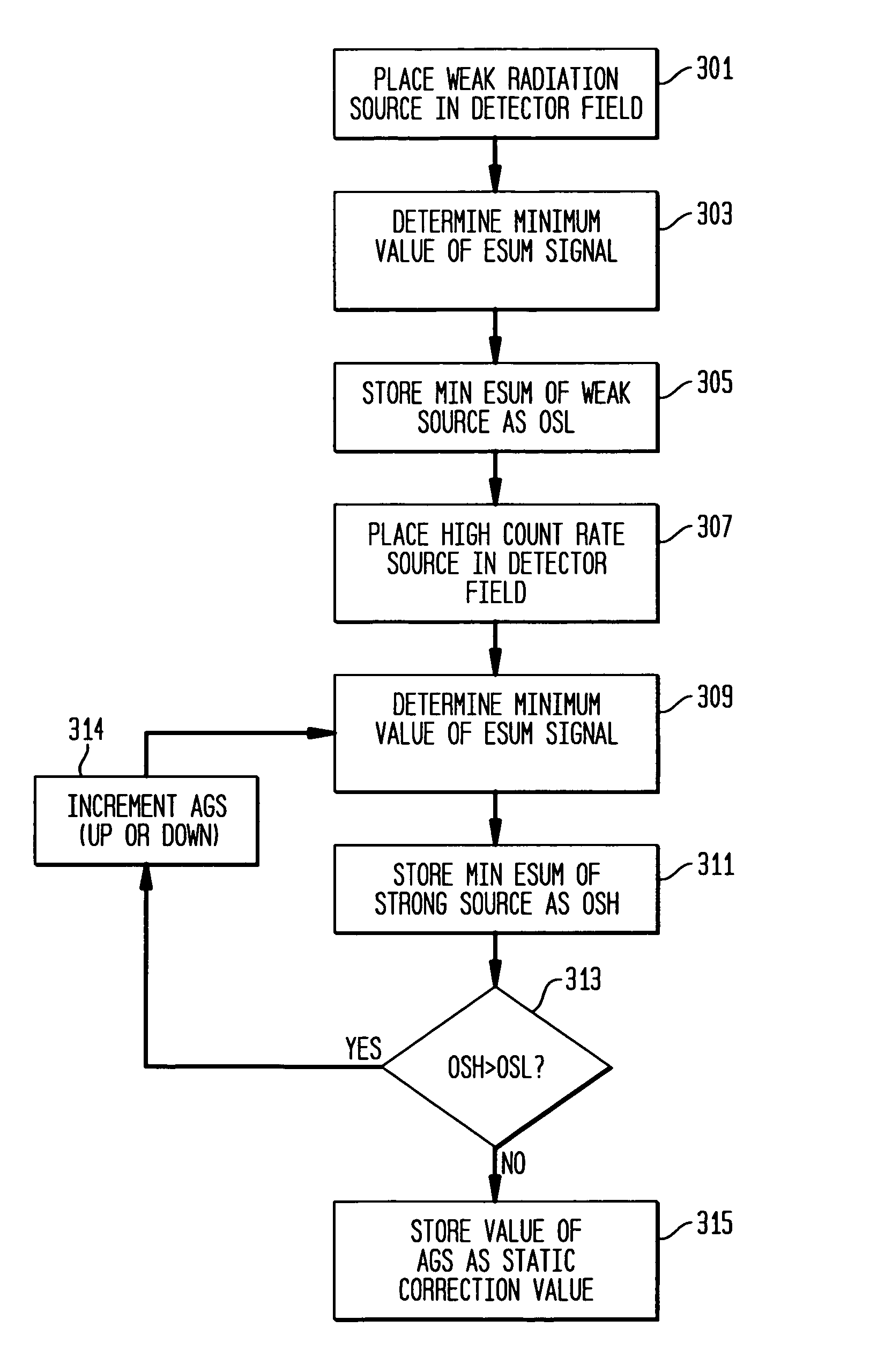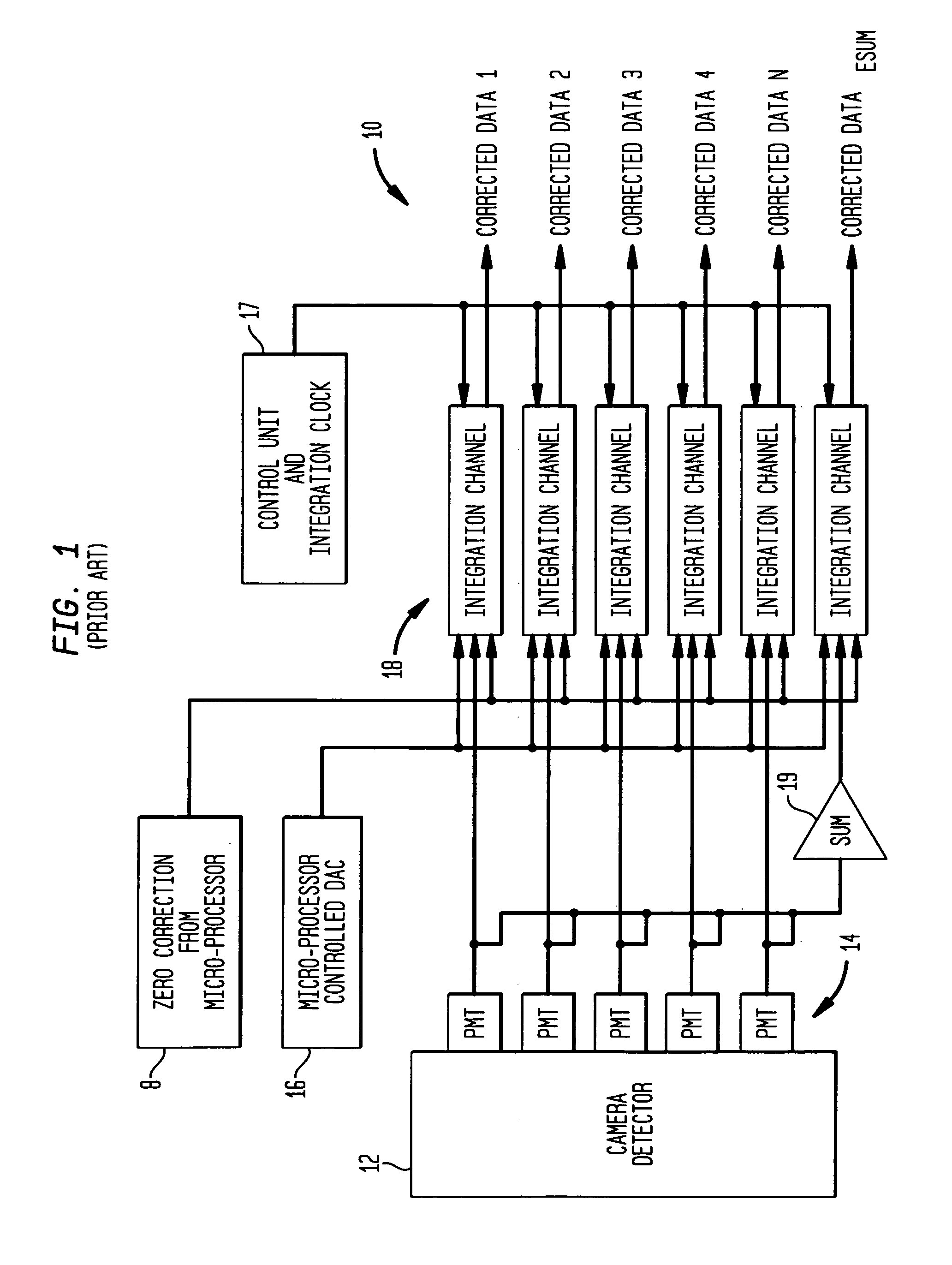Afterglow DC-offset calibration in a nuclear imaging system
a nuclear imaging and afterglow technology, applied in the field of nuclear medicine, can solve the problems of inaccuracy of information, and inability to accurately calculate the integrated value of the even
- Summary
- Abstract
- Description
- Claims
- Application Information
AI Technical Summary
Benefits of technology
Problems solved by technology
Method used
Image
Examples
Embodiment Construction
[0024]Referring to FIG. 1, a medical imaging system 10 according to the prior art, as disclosed in the aforementioned '395 patent, produces signals corresponding to events detected by a sensor such as a scintillation crystal camera detector 12. Upon absorption of incident gamma rays in the detector 12, corresponding scintillation light events are amplified by a plurality of photodetectors such as PMTs (photomultiplier tubes) 14 forming a two-dimensional array on the scintillation crystal of the detector 12. Each PMT corresponds to a respective channel, the signals from which are processed together with signals from the other channels, to calculate the spatial location of a gamma event occurring in the scintillation crystal.
[0025]The signals from the plurality of PMT channels are processed by a plurality of integration channel processing units 18 incorporating signal processing circuitry, with each processing unit 18 being operatively connected to a corresponding one of PMTs 14 for d...
PUM
 Login to View More
Login to View More Abstract
Description
Claims
Application Information
 Login to View More
Login to View More - R&D
- Intellectual Property
- Life Sciences
- Materials
- Tech Scout
- Unparalleled Data Quality
- Higher Quality Content
- 60% Fewer Hallucinations
Browse by: Latest US Patents, China's latest patents, Technical Efficacy Thesaurus, Application Domain, Technology Topic, Popular Technical Reports.
© 2025 PatSnap. All rights reserved.Legal|Privacy policy|Modern Slavery Act Transparency Statement|Sitemap|About US| Contact US: help@patsnap.com



